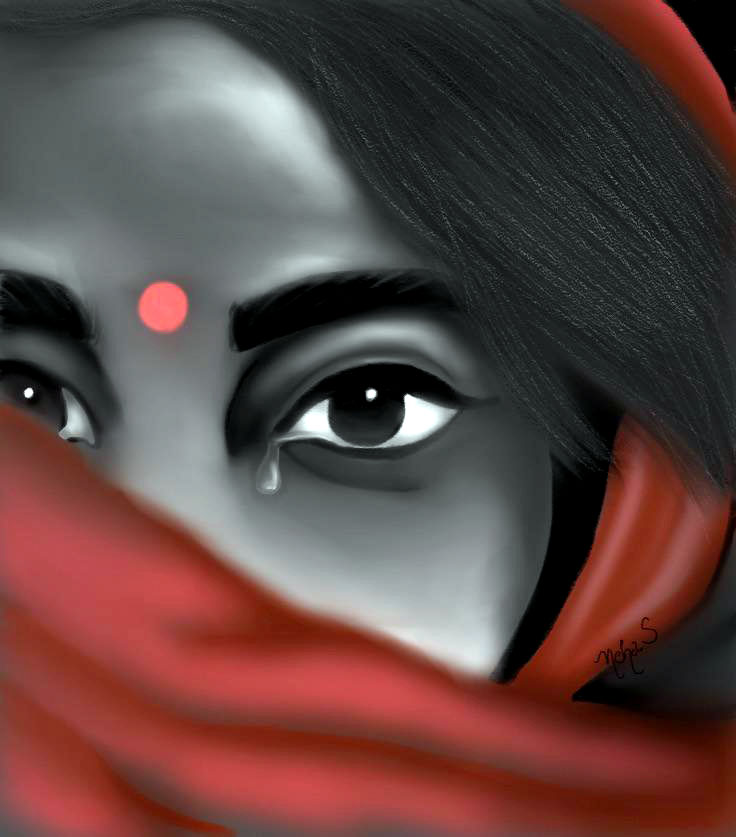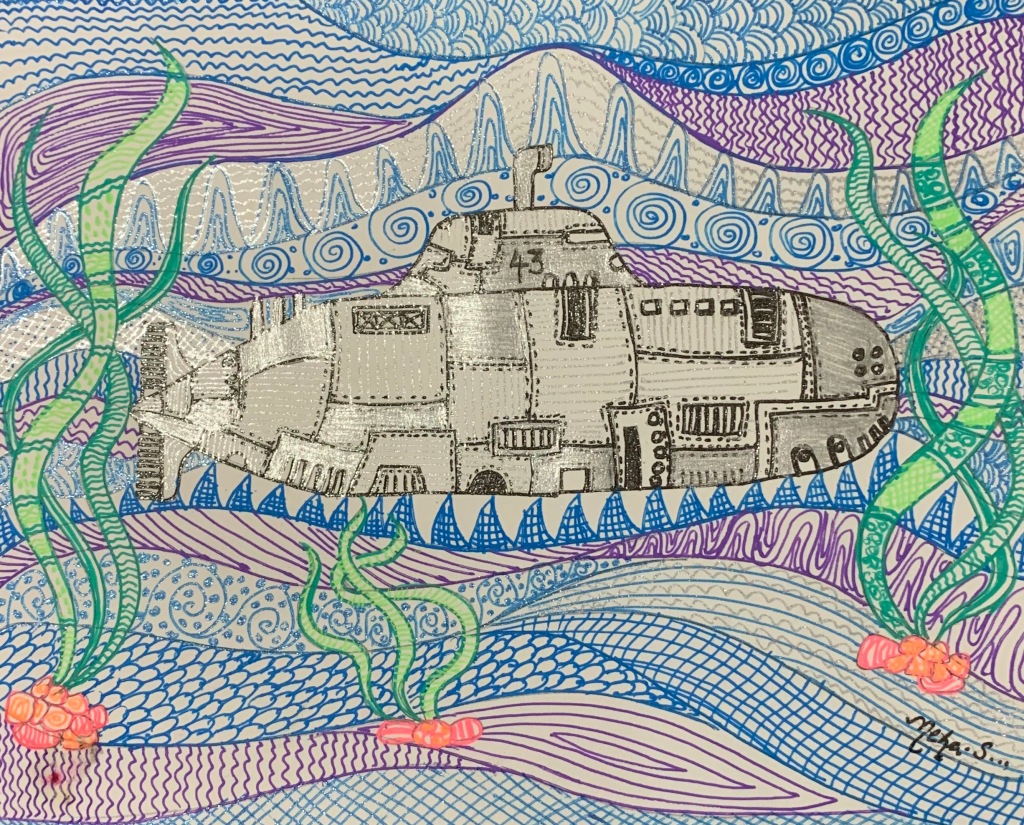Our world is currently in the grip of a nerve-racking pandemic, COVID – 19. Stress and anxiety have always affected people but with the uncontainable proliferation of this global contagion, more people than ever before seem to be falling prey to these demons. People are now not only suffering from stress related to money and work but also having to deal with the adverse effects of anxiety caused by this deadly microbe.
So how does one handle these nerves? Here’s how I do it….I use the healing power of art. For me, art is therapeutic. It helps me tide over all those anxious moments that are eating away into my mental and emotional well being. Art therapy can prove to be profoundly helpful in dealing with not just the present day stressful environment of the pandemic ridden world, but also help relieve workplace anxiety.
What is Art Therapy?
Art therapy is a form of therapy based on the belief that artistic expression has the power to heal our self-esteem and help us relax. Unlike other forms of therapy that rely on language as the foremost mode of communication, art requires something different, something unspoken.
How does it work?
Intensively focusing on an activity like creating art can relieve stress by distracting and refocusing the mind elsewhere. Art therapy can enable you to express what you feel without putting it into words and releases the anger, unhappiness or any other emotion within. You don’t necessarily need to be an artist to experience the therapeutic effects of art therapy. You can reap the emotional benefits of your artistic endeavors without having to worry about the aesthetic outcome. The mere satisfaction of creating something with your own hands will lift your spirits. Once you are done with your creation, you can look back at it and get an insight into the cause of your stress and figure out ways to avoid it.
What are the techniques involved?
Here are some suggestions that I personally found useful and interesting. Ideally, art therapy is best practiced under the guidance and support of an art therapist, so do consult one if my ideas don’t seem to help. Some of the images here are my own creations that have proved therapeutic for me in way or another. Others are purely for reference purposes.
- Display your emotions on canvas
One technique is to segregate your negative emotions from the positive ones by drawing and painting them onto a canvas. All you need to do is divide a canvas into two, in one section draw and paint your negative feelings and on the other half paint and draw feelings that make you happy. This exercise will help you replace your negative sentiments with positive thoughts, thereby releasing any stress or apprehensions.

- Digital Mediums
Another means of practicing art therapy is through digital mediums. All you need is an iPad or tablet, a stylus and any good drawing app like Adobe Photoshop Sketch or Autodesk Sketchbook. The best part about digital art therapy is that it’s easy to erase and start over! Another benefit of using digital medium is it increases concentration, focus as well as self-esteem, especially for children with autism.

· Design a postcard you don’t intend to send
Sometimes illustrating all those pent up feelings about something or someone in the form of a postcard can helps deflate the problem. Designing the postcard allows you to activate different parts of your brain and helps it to relax. Once all the negativity is out on the card, you’ll find that it has lost its power to some extent.

· Cut and paste a painting to create a collage
Recreate a new artwork form a previously done painting by cutting it up and re-sticking it together in the form of a collage. This activity will motivate you to take risks and push yourself not just creatively but also in life.

· Create art in the dark
Creating art in total darkness frees you from that judgmental mind of yours that compels you to self critic your work. This in turn will also relieve the stress that comes with the judgment and criticism you have to face in other aspects of your life. You will be pleasantly surprised to see sides of yourself you never thought existed when you turn the lights on!
- Try Mandala and Zentangle art
Zentangle and Mandala Art can prove to be extremely relaxing and therapeutic owing to their meditative qualities. Both encourage deliberate, ritual creation and allow room for human error as no erasing is allowed. The entire process can be done in about 15 minutes and can be practiced whenever you want to.
· Color therapy
Color has the ability to affect our moods and can be used to transform our state of mind. Colors can also provide an insight into your emotional state. By cutting and pasting images with colors that symbolize your current mood (for example red or orange if you are angry) can help you figure out why you’re feeling that way and work your way out of the mood.

· Doodling
Doodling can be a very effective form of therapy as it allows your feelings and sentiments to flow out uninhibited. The possibilities are endless and ever interconnected line, mark or shape adds on to your story. It’s like you are pouring your heart out onto the paper which will eventually make you feel lighter and calmer.
· Make a self portrait
Creating a self portrait of yourself from your past memories helps you recall the person you were and how you have transformed and grown with time. It makes you reminisce on your good as well as bad sides and shows you that you can change for the better.

The best part of art therapy is that you can express yourself and vent out your sentiments without uttering a word. It can help you transform your negative energy into something positive – a piece of art. That’s why I love art. Not only is it expressive, it also heals.
DISCLAIMER – All the information, data and imagery in this blog post is for informational and educational purpose only. I have only made it available with the sole effort to stimulate creative progress and artistic enrichment. Some images and data may have been taken from the links included below and I give full credit to these websites/pages, thereby in no way claiming them to be my own. Some data is based on my personal experiences and opinions. As mentioned earlier on in the post, I am not a professional art therapist and the techniques I have shared below are merely suggestions. Do consult and practice art therapy under the guidance and support of a qualified art therapist.
Sources and Credits –
https://www.huffingtonpost.in/entry/art-therapy-techniques_n_56562017e4b072e9d1c19f9b?ri18n=true
https://www.artitout.com/single-post/2014/12/04/Using-the-Feelings-Wheel




This is something I understand. Art therapy or music therapy are great tools to express ones emotions to feel better and deal with negative emotions or anxiety.
Very beautifully explained as well as illustrated with beautiful art work. This would definitely prove to be helpful in the present times when people are looking for outlets to relieve their frustrations.
LikeLiked by 1 person
Very interesting
compliments
ciao, Monica 🙂
LikeLike
Thanks so much!!
LikeLiked by 1 person
Thank for sharing. It’s touching to see the power of art and how it heal people ^^
LikeLike
My pleasure…art can be very therapeutic if put to right use.
LikeLiked by 1 person
These are all awesome ways to incorporate Art Therapy into self healing! I believe there should be art therapists within schools to help children understand their emotions on a more connective level. And I hope to one day to be that person. Thank you for sharing. And I love the work that you have done!
LikeLike
I couldn’t agree more…thanks for your feedback!
LikeLiked by 1 person